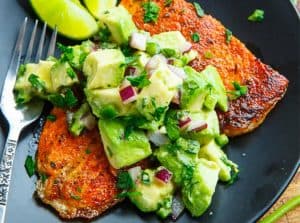You wonder how people with low income manage to have nice things and save money on top of it. Simple, they are willing to give up things to save money.

They buy only what they need and that is the path we went down to save thousands each year by avoiding unnecessary spending. Below is a list of 20 things we stopped buying to save money.
This post may contain affiliate links. Please read our policies for more details.
1. Manicures and Pedicures
Manicures and pedicures are a great way to pamper yourself. They make you feel like a queen, but these nail treatments can be a big drain on your pocketbook.
With the cost of a monthly mani/pedi ranging from $50 – $100, it is well worth the savings to learn to do your own self-care.
The savings for doing your own nails is approximately $1200 per year.
2. Eating Out
Eating out eliminates the need to cook (something I hate to do) and can be relaxing after a hectic day. The trade-off is the price. Eating out can get pricey very quickly, especially if you eat out regularly.
Not only can eating out suck up your hard-earned cash, but most people also tend to consume more calories when they are dining out than if they were eating at home.
If you are going to eat out, drinking water instead of soda or alcohol will save you money.
Savings from limiting dining out can range from several hundred dollars to several thousand dollars each year if you eat out frequently.
3. Drinking Soda and Bottled Water
Buying soda when you are at a restaurant can range from $1.75 to over $4.00 per meal. Purchasing soda at a grocery store is no bargain either.
A 24 pack of cans will cost $8.00 or more. Drinking tap water or filtered water can save you a few hundred dollars each year.
4. Car Washes
We were paying $25 – $30 per car wash because it was convenient. Now, we either wash the car at home or go to the corner car wash and get a budget wash.
These savings on less expensive car washes can add up to more than $500 a year.
5. Increased Deductibles on Car Insurance
We increased the deductibles on our car insurance coverage from $250 – $1000. We also pay the bill twice a year instead of monthly resulting in a cost savings of about $500 a year.
6. Buying Items Not on the List
Going shopping without a grocery list can be very expensive. Our grocery cart always seems to end up with a lot of junk food and unhealthy extras when it comes time to check out.
For us, this can lead to a savings of $1200 (or more) each year.
7. Cable
While we did not give cable up completely, we did shop around for the best price available.
Additionally, we got rid of channels that were not being watched and got a more basic package.
I opted to give up Amazon Prime to offset the price of our cable package. This is a savings of about $600 a year.
8. Salon Hair Color Treatments
I either color my hair myself or not at all. Paying for a professional hair color service can easily go over $100 per application.
If you have your hair done monthly, this can take an extra $1200 a year out of your pocket. If you can’t give it up, consider having it done less frequently to save money.
9. Gym Memberships
Gym memberships are bought with the best of intentions. The thought is to go every day, get in shape, lose weight. We know what happens to most gym memberships.
Save yourself the money and get creative. Workout from your home or outside. Resistance bands are a great low-cost option for doing strength training that can be used almost anywhere.
I know people that stick them in their suitcase when they travel. Saving the cost of a gym membership could save you more than $500 a year.
10. Wasting Food
Wasting food can be a costly problem. If you cook in quantities that are more than one meal, having a plan for the left-overs is essential.
If you prepare a meal and throw half of it out, this could be costing you $10 or more a week. Eating everything you buy, will likely save you another $500 a year.
11. Paying Credit Card Interest
Credit card interest can be a real killer to your financial freedom. With many credit cards having interest rates of more than 15% and some as high as 30%, your monthly interest bill can be over the top if you are carrying credit card balances.
Credit cards are something that should work for you and not a means for making the credit card companies rich. Credit cards should be paid in full each month.
If you have a large balance, you should research a debt relief program to reduce or eliminate the interest payments.
12. A Land Line
This is something we got rid of a long time ago. Our landline phone number turned into a “spam” phone and got “answered” about 10% of the time.
VoIP is a cheaper option if you must have a “home” phone. This can be an annual savings of more than $400.
13. Cell Phone Payment Plans
The last time we got new cell phones, the cost of a very pricey phone was added to our bill in 24 monthly payments.
By the time you add this amount to the monthly payment for 3 people you could be looking a $100 a month for 2 years.
Cell phones are here to stay, but it is not necessary to have the latest model when it comes on the market. Buy on sale or buy used.
14. Unused Subscription
It is easy to sign up for a free trial and let a few months pass before realizing you are not using the service.
These services may not cost much, but if you have several of them, the costs will add up.
I canceled Amazon Prime to save money. A lot of people find huge value in AP, but I was not using it.
Depending on what you are paying for monthly and not using, canceling could save you a few hundred dollars a month.
15. Specialty Coffee Drinks
The cost of buying coffee at your favorite coffee shop each morning could add a few hundred dollars to your monthly spending.
While my favorite coffee shop makes a fabulous cup of coffee, it can cost up to $5.00 or more depending on my taste that day. Coffee at home runs $10 – $20 a month.
Whether its smoothies, milk shakes, coffee, lunches, it is just another form of eating out.
16. Making Late Payments
Late fees can be a huge budget killer. Almost all bills will have late fees applied if the payments are made past their due date.
Some monthly expenses will allow a grace period before imposing a late fee.
With credit cards payments, there is not grace period. The due date is the due date. Late fees usually start at about $25 and can be as much as $50.
With credit cards, if that late fee takes you over your limit, you can be charged an over-limit fee also.
Automating payments is a great way to avoid these additional fees for missing your payment due date.
17. Junk Food
Chips, soda, cookies, jars of nuts and the list goes on and on. These packages of calories can really take a toll on the pocket book.
At our house, it was not uncommon to buy 2 – 3 bags of junk and a case of soda.
The cost for all this crap was approximately $40 a month, lots calories and maybe a few cavities as well.
18. Expensive Clothes
I don’t like to shop at all and usually wear my clothes long past their expiration date.
I limit the amount of clothes I have. The fewer choices I must make each day, the better I feel. I don’t blame Steve Jobs and Mark Zuckerberg for having several outfits that are identical.
If it were up to me, I would wear a “uniform” to work and have a few casual outfits (that make me feel good).
I wait until my favorite online shop has their 50% off sale and I buy the items that need to be replaced.
I do the same thing with shoes. For work, I buy the same pair of shoes every time I need work shoes.
Because I buy Sketchers and because I am part of their rewards program, I can buy 1 pair and get a second pair for 50% off.
Following this plan saves me approximately $500 a year or more on the cost of shoes and clothing.
19. Gave Up Vices
Smoking, drinking and buying lottery tickets (or other types of gambling) can break the bank very quickly.
While it has been a while since my husband or I smoked or drank, it was very expensive.
The price of a carton of cigarettes can be over $50. If a person smokes a pack a day, this is a minimum cost of $150 a month.
We never really bought lottery tickets, but if you do, it is almost an assured donation to the lottery commission.
Giving up smoking saved us $200 a month. Giving up drinking saved us more than $200 a month. Lottery tickets…$0 savings.
This is a total savings about $5,000 a year.
20. Stopped Paying Bank Fees
There are 3 types of bank fees…out-of-network bank fees, overdraft fees and checking account service fees.
Out-of-network fees are charged when you withdraw money from an ATM that is not affiliated with your bank. This charge is usually $3.00 or more.
Sometimes you are charged by both your bank and the bank where you are making the withdrawal.
That can add another $2.00+ dollars to your fees for a single transaction.
Overdraft fees happen when you write a check and there is not enough money in the bank to cover it. The going rate for an overdraft fee right now is $36 per check.
The third type of fee is a monthly service fee for a checking account and it can vary depending on the bank and the services offered.
I believe ours was $12. There are many banks that offer free checking. It is just a matter of finding one.
If you incur one of each of these types of fees each month, you are looking at almost $700 down the drain in avoidable bank fees.
The easiest way to accumulate money in your bank account is not to let it leave in the first place.
Look at what you are spending and find ways you can reduce or eliminate those expenses. That is what we did, and you can do it too!





